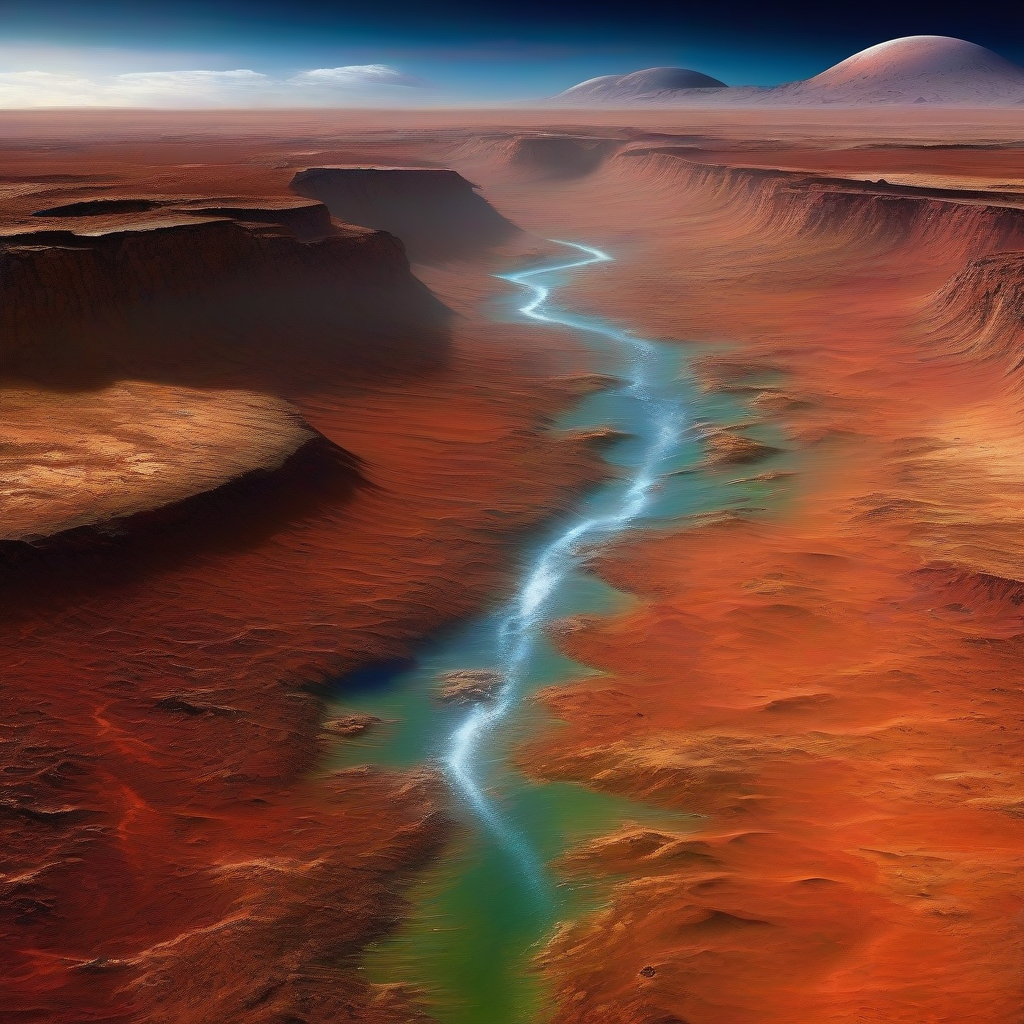# Terraforming Mars: Challenges and Technologies to Create a Habitable World
Humanity has always looked up at the stars with a sense of wonder, imagining what it would be like to walk on alien worlds. Among all the planets in our solar system, Mars stands out as the most plausible candidate for colonization. Its proximity to Earth, intriguing history of water, and potential to support life make it a prime target for exploration — and maybe even transformation. But what would it take to turn this cold, barren desert into a world where humans could thrive? The concept of terraforming Mars has captured the imagination of scientists, science fiction writers, and dreamers alike. However, the challenges are as monumental as the technologies we might one day develop to overcome them.
In this blog post, we’ll explore the hurdles we face in terraforming Mars and the cutting-edge technologies that could one day make it possible to create a second home for humanity.
---
What is Terraforming?
Terraforming refers to the process of transforming a planet’s environment to make it more Earth-like and capable of supporting human life. On Mars, this would mean altering its atmosphere, temperature, and surface conditions to create a stable environment where humans could breathe, grow food, and move around without spacesuits.
Mars, however, is far from habitable. The planet’s atmosphere is over 95% carbon dioxide, with almost no oxygen. Its surface temperature averages a frigid -80 degrees Fahrenheit (-60 degrees Celsius), and it lacks a protective magnetic field to shield against harmful solar radiation. While the idea of terraforming Mars is thrilling, these inhospitable conditions present immense technical and scientific challenges.
---
Challenges of Terraforming Mars
1. **Mars' Thin Atmosphere and Lack of Oxygen**
One of the most significant barriers to making Mars habitable is its atmosphere. While Earth's atmosphere is thick and rich in oxygen, Mars' atmosphere is incredibly thin — just 1% the pressure of Earth's — and consists mostly of carbon dioxide. This thin atmosphere cannot trap heat effectively, contributing to the planet's extreme cold.
To terraform Mars, we would need to thicken its atmosphere and introduce breathable oxygen. However, generating enough oxygen to sustain human life on a planetary scale would require either massive environmental engineering projects or a breakthrough in atmospheric chemistry. The sheer scale of the task is daunting: it’s estimated that producing enough oxygen would take centuries, even with advanced technologies.
2. **The Cold Climate**
Mars is a frozen world. Its distance from the Sun and lack of a thick atmosphere keep temperatures well below freezing. Liquid water, essential for life as we know it, cannot exist on the surface for long before evaporating or freezing.
Warming Mars would require a way to trap heat and raise the planet’s average temperature. One proposed method involves releasing greenhouse gases — much like the process driving climate change here on Earth. But how would we generate or import these gases on Mars? While the idea of manufacturing greenhouse gases from Martian materials is being explored, the logistics of doing this on a global scale are staggering.
3. **Radiation and the Missing Magnetic Field**
Unlike Earth, Mars lacks a global magnetic field to protect it from the Sun’s harmful radiation and cosmic rays. On Earth, our magnetosphere acts as a shield, deflecting charged particles from the Sun. Without this protection, the Martian surface is bombarded by dangerous radiation levels, making long-term human habitation hazardous.
To address this, we would need to either create artificial magnetic fields to shield settlements or find ways to live underground. Alternatively, some scientists envision rebuilding Mars' magnetic field through advanced, yet still theoretical, technologies.
4. **Water Resources**
Water is essential for life, and while Mars has polar ice caps and evidence of subsurface ice, the availability of liquid water is limited. Melting the polar ice caps could release significant amounts of water and CO2, which might help thicken the atmosphere, but this process would require immense amounts of energy. Additionally, tapping into underground water reserves could pose engineering challenges in Mars' low-gravity environment.
---
Technologies That Could Make Terraforming Possible
1. **Greenhouse Gas Factories**
One of the most widely discussed methods of warming Mars involves releasing greenhouse gases into its atmosphere. These gases, such as carbon dioxide, methane, and water vapor, could trap heat from the Sun and gradually raise the planet’s temperature.
NASA and other organizations have proposed building greenhouse gas factories on Mars. These facilities could use solar energy to extract CO2 from the Martian soil and release it into the atmosphere. While promising in theory, this approach would take centuries, if not millennia, to produce noticeable effects.
2. **Orbital Mirrors**
Another intriguing idea is the use of giant orbital mirrors to reflect sunlight onto Mars' surface. These mirrors could focus sunlight onto specific areas
